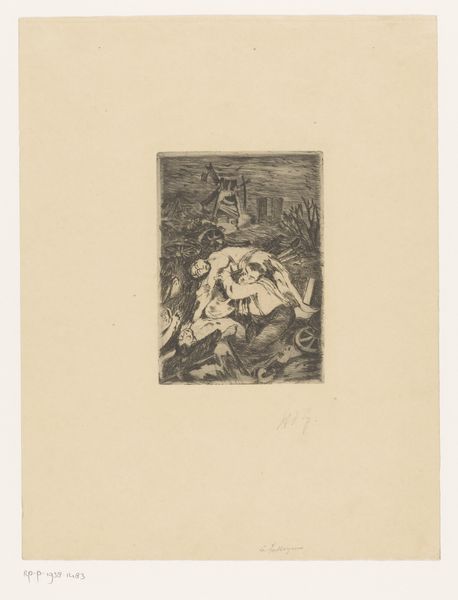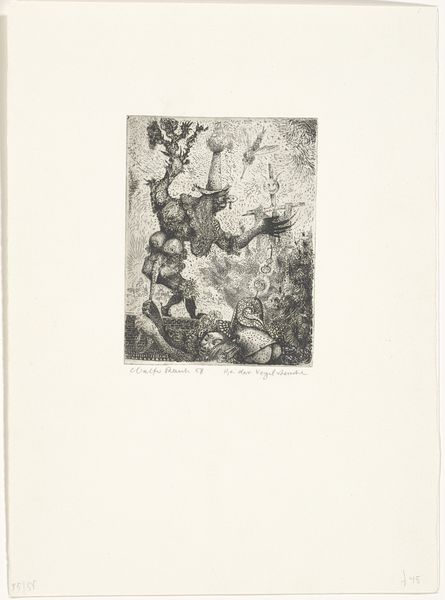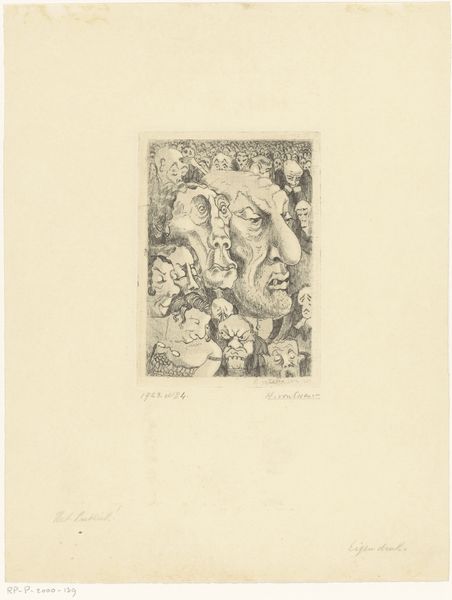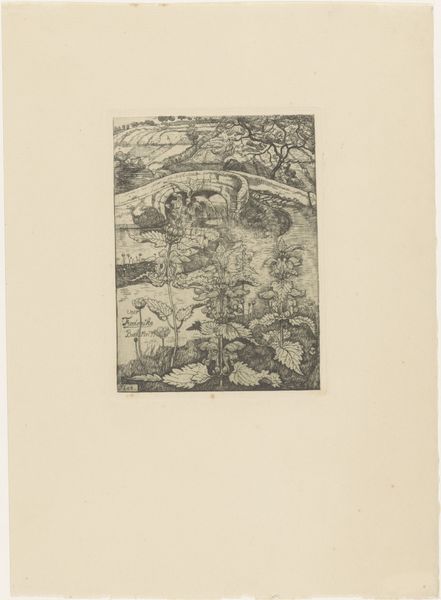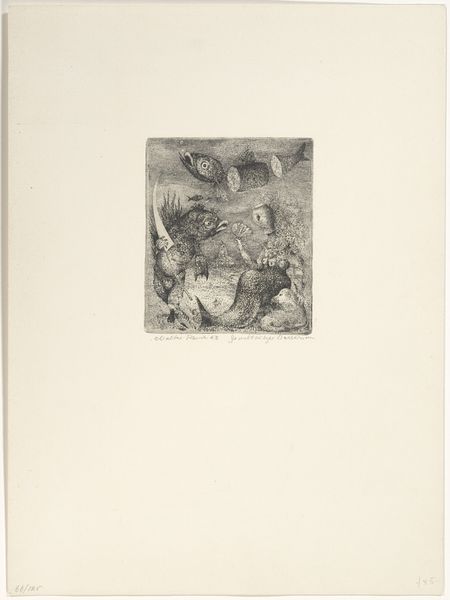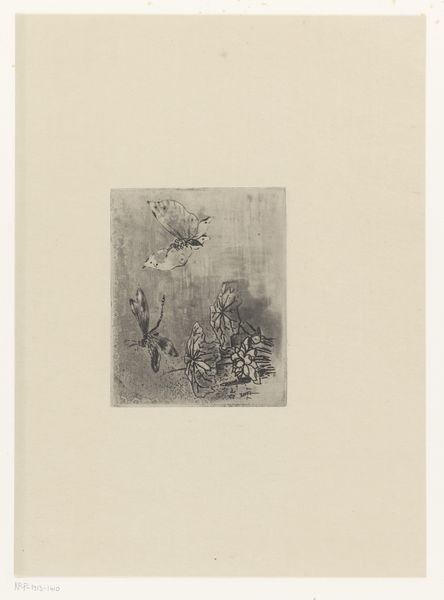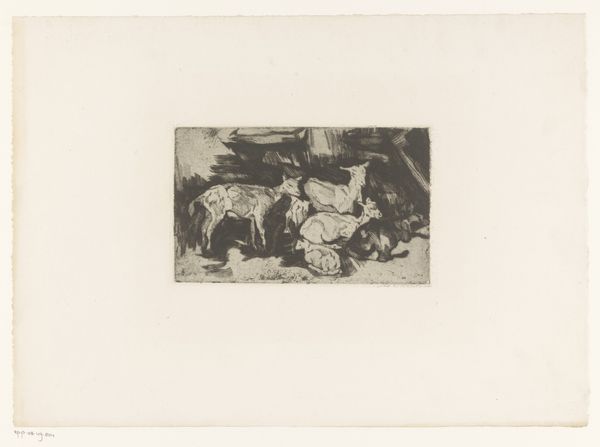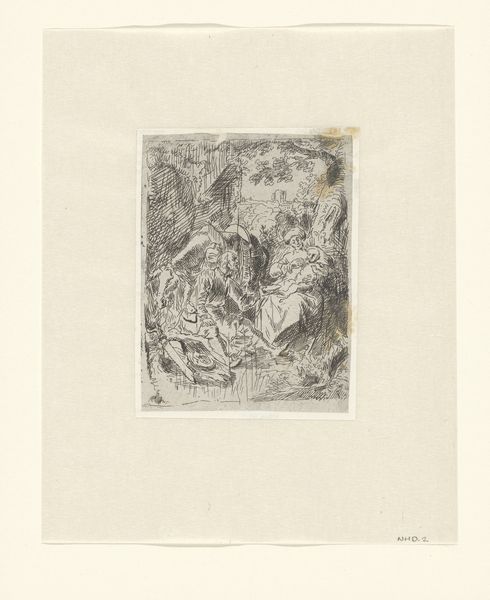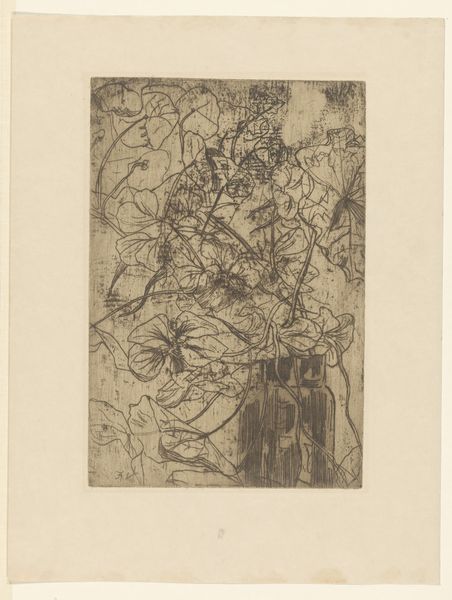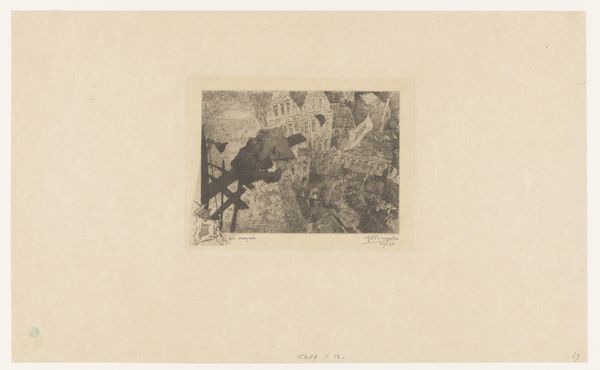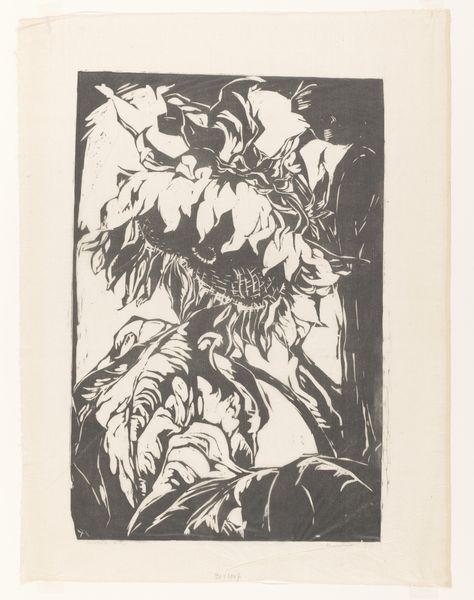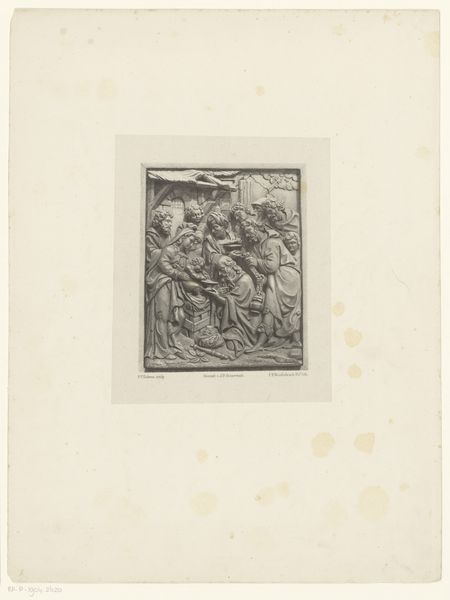
drawing, print, etching, paper
#
drawing
# print
#
etching
#
paper
#
line
Dimensions: height 180 mm, width 118 mm
Copyright: Rijks Museum: Open Domain
Editor: So, this is Floris Verster’s "Rozen," created in 1891. It's an etching on paper, currently held at the Rijksmuseum. There's a certain somber quality to it, almost melancholic. What are your thoughts when you see it? Curator: It's interesting that you perceive it as melancholic. I think, historically, it’s essential to situate Verster within the artistic climate of the late 19th century. The detailed linear style is somewhat at odds with Impressionism that was blossoming in France, though clearly connected with art movements locally, it shows the independent stylistic explorations in Dutch art, especially in printmaking. Have you considered what the specific choice of roses might signify? Editor: I hadn’t thought about the roses themselves, just the way they're depicted. Do you think it might have to do with the symbolism of roses? Curator: Precisely! Roses in the 19th century carried heavy symbolic weight – love, beauty, but also transience. As a historian, I'm curious about the socio-political factors driving Verster’s choices. Were there particular horticultural trends influencing artists? Did the rise of the middle class and increased leisure time contribute to an obsession with floral imagery? The consumption of this image as a print allows it to become far more accessible and wide reaching as an aesthetic motif, democratizing floral representation. Editor: So, you're saying the seemingly simple image of roses touches on broader cultural and class dynamics. Curator: Exactly. And furthermore, consider the institution exhibiting this work. The Rijksmuseum, as a national museum, plays a vital role in constructing and preserving cultural heritage. By displaying "Rozen", what message is the museum sending about Dutch art and its place in the world? What does choosing this piece represent? Editor: That's fascinating, I'd never considered that the institutional context could change the meaning. Now I see so many layers beyond the surface. Thanks for pointing that out. Curator: My pleasure. It shows how important it is to not only look at the art itself, but at how historical contexts frame its impact. It changes how we interpret it.
Comments
No comments
Be the first to comment and join the conversation on the ultimate creative platform.
